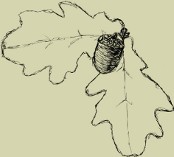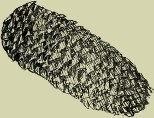42 41 40 39 38 37 36 35 34 33 32 31 30 29 28 27 26 25 24 23 22 21 20 19 18 17 16 15 14 13 12 11 10 9 8 7 6 5 4 3 2 1
Issue 29 (1998)
An examination of the samples of pine wood obtained from the disks cut out from the butt end (about 200 mm from the butt), in the half of the length and from the top part was carried out.
The mentioned disks come from entirely different places of growth. The age of examined pine wood is about 90 years (province of Olsztyn), about 160 years (province of Jelenia Góra) and about 80 years (province of Katowice). It has been discovered that the amount of extractive substances in pine wood, independently from the place of growth reduces gradually from the pith toward the periphery. Also independently form the place of growth of the examined wood, the amount of mineral substances in the top part is the highest and in the butt-end is the lowest. Both n the sapwood and in the heartwood there is the highest amount of calcium especially in the top part of the stem. The amount of potassium is much lower in the pin ewood. There is more potassium in the heartwood than in the sapwood and the highest amount of it is in the top part of stem. There is more magnesium in the heartwood than in the sapwood but this difference disappears with the age of the wood. The amount of sodium, iron, zinc and copper is lower than 100 ppm. The pine stem wood aged 80 years from the province of Katowice is characterize dby the higher amount of iron and zinc when compared to the pine wood from the provinces of Olsztyn and Jelenia Góra (3 cross-section disks were examined). The amount of copper in the examined wood is the lowest as well in the heartwood as in the sapwood, but more copper is placed in the top part of a stem.
The character of change of the metal ion's in the examined wood is consistent with the character of such changes in the amount of the mineral substances.
The purpose of this study is better approach to relations between acoustic emission (AE) activity, and wood fracture process in across-to-the-grain direction. AE activity was recorded in bending test of pine and beech wood samples while cracking process was forced in radial and tangential planes. The experiment was performed on samples with a notch.
Analysis of the test results showed very close relation between the logarithm of AR counts rate and the stress intensity factor (K1). It was revealed as well that a linear relation (r = 0.981) between stress intensity factor AE process starting moment and critical value of stress intensity factor (KIC), which characterises fracture toughness of wood. The obtained results suggest the possibility of fracture control in wood drying process by AE counts rate measurement.
The following growth rings counting from the pith, were taken for research. Each of the growth rings was divided into 10 even sections within a single growth ring. Particular sections were macerated in a mixture of glacial acetic acid 30% hydroxen peroxide. Measurements of the length of fibres and vessel members as well as diameter of the latter were performed. The measurements were made with the use of the “Imager 512” image processing system.
Key words: birch, fibre, vessel member, single growth ring, juveline and mature wood
The investigations on the birch wood samples attacked by Piptoporus betulinus in the first year of its activity were carried out. The wood from chosen places of the cut out rings at the height of the occurrence of the fructifications was examined and the fructifications as well. The highest contents of the substances soluble in the alcohol-benzene mixture and the substances soluble in 1% NaOH is in the wood of the most damaged places the closed to places of growing of the fructificattions of Piptoporus betulinus. The fructifications include a large quantity of these substances as well: 22% — those soluble in the alcohol-benzene mixture, and 43.8% — those soluble in 1% NaOH. Apart from that they include five times more zincum, over three times more magnesium and potassium and twice as much sodium than adjacent wood. In the wood the concentration of the manganium increases together with the increase of the decomposition of the birh wood. For the rest of the examined elements: iron, calcium, zincum, magnesium, sodium the forgoing interdependence does not happen.
Relation between degree of decay by soft rot (Chaetomium globosum) and brown-rot (Coniophora putcana) and resistance to breaking strength of pine wood were investigated. Fracture surfaces morphology was inspected using scanning electron microscopy. It was found that increase of wood in wood exposure to the action of investigated fungi caused on abrupt increase of wood brashness and decrease of its fracture energy. Fracture planes are smooth and oriented along the transverse direction. Most of the tracheids failed in an abrupt transwall manner.
The research on changes of acoustic emission cumulative counts and counts rate were carried out on pine wood samples preheated formerly in temperature of 150°C, in periods of 12, 24 and 48 hours and for non-heated control samples. Acoustic emission was recorded during 3-point bending test. There were observed three stages of wood cracking process: stage 1 — the stable initiation of the structural defects creation in wood, stage 2 — the stable propagation of the internal defects, stage 3 — the catastrophic propagation of the defects. The threshold values of bending pads which initialise each stage of the cracking process, being a result of the thermal depreciation rate of wood, were equal to the values of wood mechanical properties measured in bending test.
There are presented results of the research on the influence of equilibrium moisture content and temperature on the drying rate of beech wood in the longitudinal direction. The investigations were performed for laminar air flow. The drying rate was expressed by the flux density of evaporated moisture.
Key words: beech, wood drying, drying rate, temperature, equilibrium moisture content
The influence of basic parameters on tehcnological effects of typical kraft pine (kappa no 29) and hardwood (kappa no 18) pulps with oxygen and ozone delignification was investigated.
Multistage bleaching TCF with various short sequences using nonchlorine agents: oxygen, ozone, hydrogen peroxide, were performed.
The fully bleached pulps obtained at suitable conditions of TCF bleaching were characterized by stable brightness over 87% and strength properties close to pulps bleached traditionally with chlorine agents.
The time of nonchloring TCF bleaching was 130-170 min, i.e. it was several times shorter than that of the methods with chlorine agents.
An attempt was undertaken to state if there exists relation between share of sapwood and heartwood volume of merchantable stems of Scots pines, and selected biometric features of trees. Analysed was interdependence o both kinds of wood with breast diameter, length of crown, area of crown projection, and number of whorls of living crown at Scots pines grown in conditions of habitat of mixed fresh coniferous forest.
Key words: Scots pine, biometric features of crowns, breast diameter of tree, sapwood, heartwood, mixed fresh coniferous forest
In this work studied was clearance occurring between matched elements of the type mortice — tenon. Designed was range of variability of clearances occurring in the industrial conditions, and proposed was possible to reach fitting tolerance. Verified was n the industrial conditions controlling of he arithmetic mean of the mortice dimension, as the best way of optimization of the mean clearance of the matched elements.
Key words: mortice, tenon, fit tolerance
For the production of HM glues four copolyamides as basic binding agents having a skeleton functions were used. They had different composition and softening temperature (Tm). Investigations of TG showed that in the temperatures of 340-550°C thermal decomposition of polymers hoes in one step process but at the same time decomposition of glues goes in two steps. Changes in HM glues determined by T G analysis before and after thermal aging caused lowering of the glue lines strength but the results obtained met the standard requirements. Using copolyamides and modifying agent it is possible to get HM glues with wood but at the same time differentiated physico-mechanical properties.
Eight strains of Serpula lacrymans were compared in relation to their previously determined factors (5 physiological and 10 toxicometrical). A numerical clustering analysis was used along with, as coefficient of similarity, “cos Q” after standardization of all results.
Key words: dry rot, wood preservatives, CCA, NaPCP, numerical analysis, Serpula lacrymans
For studies were selected five HM adhesives with trade name Jowatherm. The softening temperature Tm of adhesives was determined with the use of ring-ball method, Kofler's heating metal, and from thermoanalytic DTA curves. On the base of the data from TG curves were calculated values of Ea of the thermal decomposition process of HM adhesives in the function of conversion using equation of Ozawa-Flynn-Wall.
Key words: HM adhesive, thermal property, softening temperature, TG, DTA, degree of conversion
In this study characterised was macrostructure of Scots pine (Pinus sylvestris L.) wood derived from forest stands of younger age classes. Said trees have grown in conditions of forest stand type mixed fresh coniferous forest, which have share in the area of Polish forests about 21%. This macrostructure was expressed with following features: average width of annual increment, width and share of late wood, and share of sapwood and heartwood in volume of stem.
Key words: mixed fresh coniferous forest, macrostructure of wood, latewood, sapwood, heartwood, volume of tree stem















 Download PDF
Download PDF